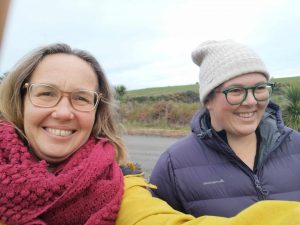Many farmers want to do the right thing, but protecting native biodiversity has costs: the the opportunity cost from the next best alternative use of the land and the cost of labour, technology, materials etc. to protect biodiversity (e.g. cost of predator control). These costs are experienced by the farmer (or any private landowners), but the benefits of biodiversity are a public good.
In July 2023, Assoc. Prof. Janice Lord from Botany and I met with Simon Davies (owner of Coombe Hay Farm at Toko Mouth) and Rebecca Begg (Project Coordinator Otago South River Care) to discuss the Government’s proposal for a Biodiversity Credit System.
As part of the Biodiversity and Agri-Policy Group, which includes Prof. Sara Walton from Management, we made a formal submission on the Government’s proposal (BAP submission_Helping Nature_final +appendix). We also gained funding to research biodiversity credits as an innovative tool to provide positive, financial incentives for biodiversity uptake. Our research assistant Emma Ahlezon from Ecology will be interviewing farmers from local catchment groups such as Otago South River Care and Tiaki Maniototo to get their input on how this could work. A bottom up approach to policy making may help reduce conflict between policy makers and farmers.
Previous research:
Walton S., Lord J.M., Lord A.J. and Kahui V. (2023) Conflicts between being a ‘Good Farmer’ and freshwater policy: a New Zealand case study. Agriculture and Human Values https://doi.org/10.1007/s10460-023-10471-1



